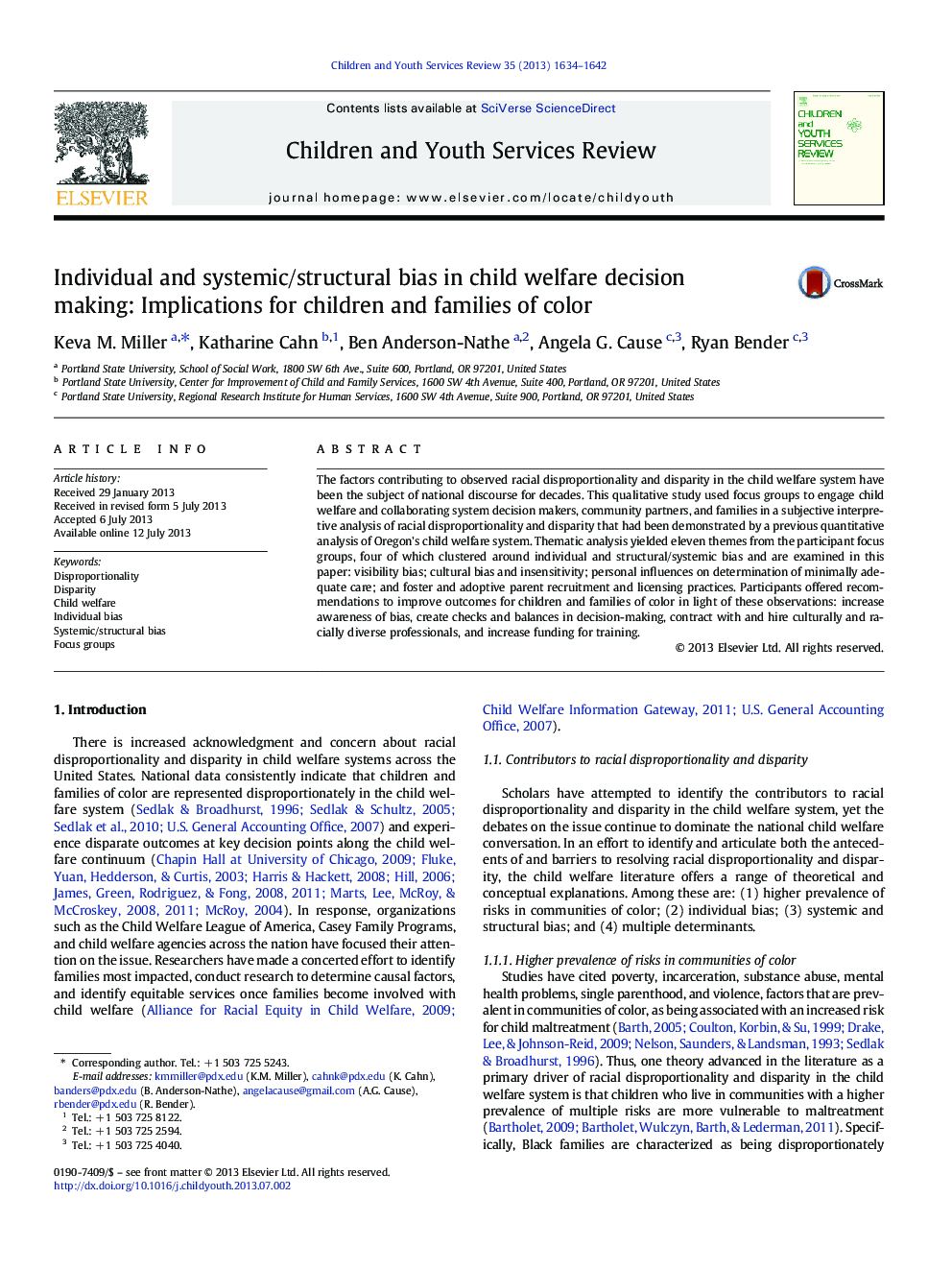| Article ID | Journal | Published Year | Pages | File Type |
|---|---|---|---|---|
| 10311637 | Children and Youth Services Review | 2013 | 9 Pages |
Abstract
The factors contributing to observed racial disproportionality and disparity in the child welfare system have been the subject of national discourse for decades. This qualitative study used focus groups to engage child welfare and collaborating system decision makers, community partners, and families in a subjective interpretive analysis of racial disproportionality and disparity that had been demonstrated by a previous quantitative analysis of Oregon's child welfare system. Thematic analysis yielded eleven themes from the participant focus groups, four of which clustered around individual and structural/systemic bias and are examined in this paper: visibility bias; cultural bias and insensitivity; personal influences on determination of minimally adequate care; and foster and adoptive parent recruitment and licensing practices. Participants offered recommendations to improve outcomes for children and families of color in light of these observations: increase awareness of bias, create checks and balances in decision-making, contract with and hire culturally and racially diverse professionals, and increase funding for training.
Related Topics
Health Sciences
Medicine and Dentistry
Perinatology, Pediatrics and Child Health
Authors
Keva M. Miller, Katharine Cahn, Ben Anderson-Nathe, Angela G. Cause, Ryan Bender,
